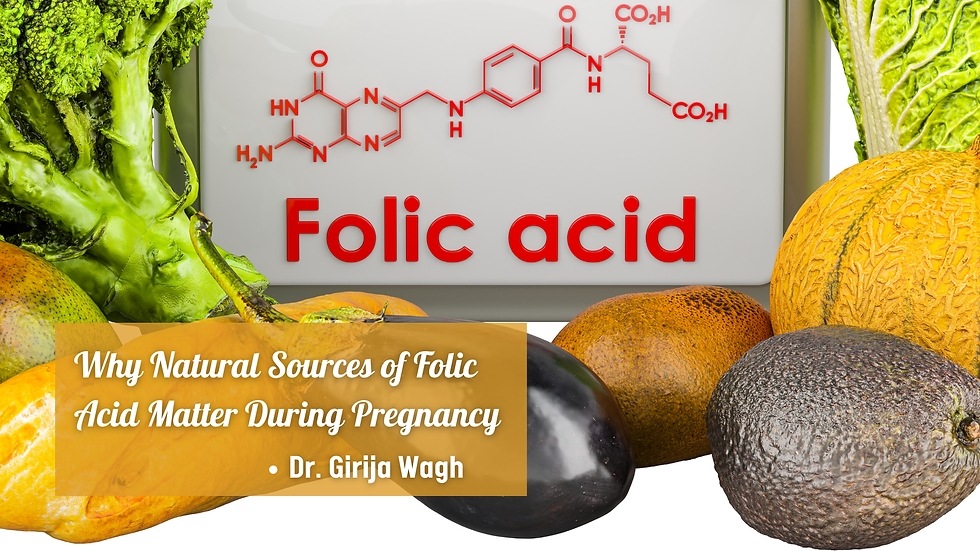Postpartum Haemorrhage (PPH): Understanding Excessive Bleeding After Childbirth
- Dr. Girija Wagh

- Oct 9
- 2 min read

Childbirth is a powerful and transformative experience, but it also brings certain risks that require careful medical attention. One of the most serious complications that can occur after delivery is postpartum haemorrhage (PPH) — excessive bleeding following the birth of a baby. Although it is a medical emergency, it is also largely preventable and treatable when identified early.
What Is Postpartum Haemorrhage?
Postpartum haemorrhage refers to significant blood loss after childbirth.
In a vaginal delivery, bleeding more than 500 ml is considered PPH.
In a caesarean delivery, bleeding more than 1000 ml qualifies as PPH.
However, doctors treat any amount of bleeding that leads to a fall in blood pressure, rapid pulse, or signs of shock as PPH, regardless of the exact volume.
Types of Postpartum Haemorrhage
Primary (Early) PPH: Occurs within the first 24 hours after childbirth. This is the most common and dangerous type.
Secondary (Late) PPH: Occurs after 24 hours up to 12 weeks postpartum, often due to retained placental tissue or infection.
Causes of PPH: The 4 T’s
Doctors often use the “4 T’s” to remember the main causes of postpartum haemorrhage:
Tone – Uterine Atony: The uterus fails to contract properly after delivery. This is the most common cause of PPH.
Tissue – Retained Placenta or Membranes: Pieces of the placenta or membranes remain inside the uterus, preventing it from contracting.
Trauma – Birth Canal Injuries: Tears or lacerations in the cervix, vagina, or perineum can lead to heavy bleeding.
Thrombin – Coagulation Disorders: Problems with the mother’s blood-clotting ability can make bleeding difficult to control.
Warning Signs and Symptoms
Recognizing the signs early can save lives. Common symptoms include:
Heavy or continuous vaginal bleeding
Drop in blood pressure
Rapid or weak pulse
Dizziness, fainting, or feeling unusually weak
Pale, cold, or clammy skin
If any of these symptoms appear after delivery, immediate medical help is crucial.
Diagnosis and Management
The healthcare team closely monitors the mother’s vital signs and the amount of blood loss during and after delivery.
Management involves:
Uterine massage to help the uterus contract
Medications such as oxytocin, ergometrine, or misoprostol to stop bleeding
Removal of retained tissue if present
Repair of birth canal tears
Blood transfusion if significant blood loss has occurred
In rare, severe cases, surgical procedures such as uterine artery ligation or even hysterectomy may be necessary to save the mother’s life.
Prevention of PPH
Preventing PPH begins with good antenatal care and skilled delivery.
Administration of uterotonic drugs (like oxytocin) immediately after birth helps the uterus contract and reduces the risk of bleeding.
Regular monitoring of the mother for at least 24 hours after delivery ensures early detection.
Managing anaemia during pregnancy, avoiding prolonged labour, and ensuring the placenta is completely delivered are also important preventive measures.
The Takeaway
Postpartum haemorrhage remains one of the leading causes of maternal death worldwide, but with proper awareness, skilled healthcare support, and timely action, it can be prevented and effectively treated.
Every mother should deliver in a well-equipped healthcare facility and remain under observation after childbirth — because early recognition and prompt management save lives.







Comments